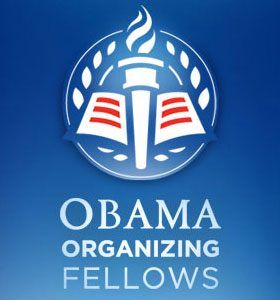Sunday, March 19, 2017
Thursday, March 16, 2017
Wednesday, March 15, 2017
Shirley Graham Du Bois
Shirley Graham Du Bois
The Rev. David Graham feared that a mob was coming to burn down his church. The community meeting he had organized to protest the killing of a young Black boy by a policeman had stirred up trouble. So Graham stood before his congregation with a loaded gun and a Bible, told the women and children to get out of harm’s way, and prepared, alongside 21 armed men, to fight.In the end, nothing came of it, but the reverend’s young daughter, Shirley, about age 6, was marked forever by the scene and others like it in the American South at the turn of the last century. As a result, she devoted her life to fighting racism and oppression as a writer and an activist. Unlike the contributions of her second husband, famed civil rights activist W.E.B. Du Bois, Graham Du Bois’ have largely been forgotten,
Shirley Graham Du Bois (November 11, 1896 – March 27, 1977) was an American award-winning author, playwright, composer, and activist for African-American and other causes. In later life she married the noted thinker, writer, and activist W. E. B. Du Bois. The couple became citizens of Ghana in 1961 after they emigrated to that country. She won the Messner and the Anisfield-Wolf prizes for her works.
She was born Lola Shirley Graham, Jr. in Indianapolis, Indiana, in 1896, as the only daughter among six children. Her father was an African Methodist Episcopal minister, and the family moved often. In June 1915, Shirley graduated from Lewis and Clark High School in Spokane, Washington.
She married her first husband, Shadrach T. McCants, in 1921. Their son Robert was born in 1923, followed by David in 1925. They divorced in 1927. In 1926, Graham moved to Paris, France, to study music composition at the Sorbonne. She thought that this education might allow her to achieve better employment and be able to better support her children. Meeting Africans and Afro-Caribbean people in Paris introduced her to new music and cultures.
After meeting Africans in Paris while studying at the Sorbonne in 1926, Graham composed the musical score and libretto of Tom Tom: An Epic of Music and the Negro (1932), an opera. She used music, dance and the book to express the story of Africans' journey to the North American colonies, through slavery and to freedom. It premiered in Cleveland, Ohio. The opera attracted 10,000 people to its premier at the Cleveland Stadium and 15,000 to the second performance.
In 1931, Graham entered Oberlin College as an advanced student and, after earning her B.A. in 1934, went on to do graduate work in music, completing a master's degree in 1935. In 1936, Hallie Flanagan appointed Graham director of the Chicago Negro Unit of the Federal Theatre Project, part of President Franklin D. Roosevelt's Works Progress Administration. She wrote musical scores, directed, and did additional associated work.
According to the Oxford Companion to African-American Literature, her theatre works included Deep Rivers (1939), a musical; It's Morning (1940), a one-act tragedy about a slave mother who contemplates infanticide; I Gotta Home (1940), a one-act drama; Track Thirteen (1940), a comedy for radio and her only published play; Elijah's Raven (1941), a three-act comedy; and Dust to Earth (1941), a three-act tragedy.
Due to the difficulty in getting musicals or plays produced and published, Graham turned to literature. She wrote in a variety of genres, specializing from the 1950s in biographies of leading African-American and world figures for young readers. She wanted to increase the number of books that dealt with notable African Americans in elementary school libraries.
Owing to her personal knowledge of her subjects, her books on Paul Robeson and Kwame Nkrumah are considered especially interesting. Other subjects included Frederick Douglass, Phillis Wheatley, and Booker T. Washington; as well as Gamal Abdul Nasser, and Julius Nyerere. One of her last novels, Zulu Heart (1974), included sympathetic portrayals of whites in South Africa despite racial conflicts.
In the late 1940s, Graham became a member of Sojourners for Truth and Justice – an African-American organization working for global women's liberation. Around the same time, she joined the American Communist Party.
She and Du Bois married in 1951, the second marriage for both. She was 54 years old; he was 83. They later emigrated to Ghana, where they received citizenship in 1961 and he died in 1963. In 1967, she was forced to leave after a military-led coup d'état, and moved to Cairo, Egypt, where she continued writing. Her surviving son David Graham Du Bois accompanied her and worked as a journalist.
Du Bois couldn’t have had that last important phase of his life without the partnership he had with Shirley. Before their marriage, Du Bois was in a “sparring match” with communists, says Gerald Horne, a historian at the University of Houston, but that quickly changed as he came to see his wife’s logic. While older activists fought solely against racial discrimination, “young lions like Shirley said no, economics is also affecting us” and supported the Communist Party.
When Du Bois was arraigned as a suspected communist during the Red Scare, Graham Du Bois rallied to her husband’s defense by giving speeches nationwide. She didn’t wave a gun or a Bible, but she held sway over audiences, and Du Bois was eventually cleared. In 1961, the couple left the U.S. for Ghana because of anti-communist and anti-Black extremism, a move, Woodard says, that was “engineered” by Graham Du Bois, who was forced to leave behind her post as founding editor of the Black magazine Freedomways.
Graham Du Bois continued supporting radical causes. She was the founding director of Ghana Television, met with government officials in China and introduced Malcolm X to Ghanaian President Kwame Nkrumah. She embraced Malcolm X like a “son” and was “instrumental” in his success, by providing him with support and contacts. She may have been a controversial figure in her time, but it’s puzzling why Graham Du Bois never earned a bigger entry in history books.
Souces: Libby Coleman - THE BADASS WIFE OF W.E.B. DU BOIS, Professor Adrienne Gosselin - Michael Schwartz Library Cleveland State University, Wikipedia,
Shirley Graham Du Bois speaking at UCLA 11/13/1970
Shirley Graham Dubois
David DuBois: My Mother, Shirley Graham DuBois
David DuBois: My Mother's Marriage to W.E.B. DuBois
Alice Augusta Ball
Alice Augusta Ball (July 24, 1892 – December 31, 1916) was an African American chemist who developed an injectable oil extract that was the most effective treatment for leprosy until the 1940s. She was also the first woman and first African American to graduate from the University of Hawaii with a master's degree.
Alice Augusta Ball, a pharmaceutical chemist, was born in Seattle, Washington in 1892 to Laura Louise (Howard) Ball, and James P. Ball, Jr. Alice Ball's father was a newspaper editor, photographer, and a lawyer. Her grandfather, James Ball Sr., was a famous photographer, and was one of the first African Americans in the United States to learn to daguerreotype. James P. Ball, Sr. moved to Hawaii for health reasons in 1903 with his family and opened a studio. He died less than a year later and the family returned to Seattle in 1905. After returning to Seattle, Ball attended Seattle High School and received top grades in the sciences. She graduated from Seattle High School in 1910.
Alice Ball entered the University of Washington and graduated with two degrees in pharmaceutical chemistry in 1912 and pharmacy in 1914. In the fall of 1914, she entered the College of Hawaii (later the University of Hawaii) as a graduate student in chemistry. On June 1, 1915, she was the first African American and the first woman to graduate with a master of Science degree in chemistry from the University of Hawaii. In the 1914-1915 academic year she also became the first woman to teach chemistry at the institution.
In her postgraduate research career at the University of Hawaii, Ball investigated the chemical makeup and active principle of Piper methysticum (kava) for her master's thesis. While working on her thesis, Ball was asked by Dr. Harry T. Hollmann, an assistant surgeon at Kalihi Hospital in Hawaii, to help him develop a method to isolate the active chemical compounds in chaulmoogra oil.
Chaulmoogra oil had previously been used in the treatment of Hansen's disease (leprosy) with mixed results. Most patients with Hansen's disease were hesitant to take the oil over the long term because it tasted bitter and tended to cause an upset stomach.
Ball developed a process to isolate the ethyl esters of the fatty acids in the chaulmoogra oil so that they could be injected, but died before she could publish her results. At the time of her research Ball became ill. She worked under extreme pressure to produce injectable chaulmooga oil and, according to some observers, became exhausted in the process. Ball returned to Seattle and died at the age of 24 on December 31, 1916. According to her obituary, she suffered injuries from inhaling chlorine gas during a class demonstration in Honolulu.
Arthur L. Dean, a chemist and the president of the University of Hawaii, continued her work, published the findings, and began producing large quantities of the injectable chaulmoogra extract. Dean published the findings without giving credit to Ball, and renamed the technique the Dean Method, until Hollmann spoke out about this. In 1918, a Hawaii physician reported in the Journal of the American Medical Association that a total of 78 patients were released from Kalihi Hospital by the board of health examiners after treatment with injections. The isolated ethyl ester remained the preferred treatment for Hansen's disease until sulfonamide drugs were developed in the 1940s.
Although her research career was short, Ball introduced a new treatment of Hansen's disease which continued to be used until the 1940s. The University of Hawaii did not recognize her work for nearly ninety years. In 2000, the university finally honored Ball by dedicating a plaque to her on the school's lone chaulmoogra tree behind Bachman Hall. On the same day, the former Lieutenant Governor of Hawaii, Mazie Hirono, declared February 29 "Alice Ball Day" which is now celebrated every four years. More recently, Ball was honored by the University of Hawaii Board of Regents with a Medal of Distinction in 2007.
Souces: http://www.blackpast.org, Wikipedia
Alice Augusta Ball
Subscribe to:
Posts (Atom)














































